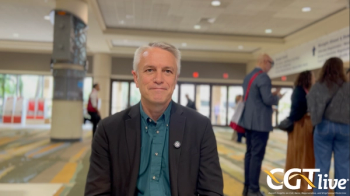
CGT Therapies More Likely to Gain Approval for Hematological Malignancies, Orphan Diseases
A NEWDIGS analysis compared clinical trial success rates from 1988 to 2020.
A new analysis by NEWDIGS at Tufts Medical Center has revealed that cell therapies for hematological malignancies and cell and
“Cell and gene therapies are transforming outcomes for people living with serious and sometimes fatal conditions,” Mark Trusheim, Strategic Director, NEWDIGS, said in a statement.2 “This analysis provides evidence that once cell and gene therapies enter clinical development they are not only more likely to ultimately gain FDA approval than other candidate medicines but are also more likely to advance at nearly every phase of the clinical development process.
Analysts at NEWDIGS compared clinical trial success rates and overall likelihood of approval of chimeric antigen receptor (CAR) T-cell and T-cell receptor (TCR) therapies for hematological malignancies and gene therapies for orphan diseases to the average investigational therapeutic in each field from 1988 through 2020. They found that CAR-T/TCR therapies were 3.2 times more likely to gain FDA approval than the average oncology therapy and 2.3 times more likely than the average hematological oncology therapy.1 The largest success rate difference for CAR-T/TCRs is seen in Phase 3, with a 100% progression rate to FDA application review for CAR-T/TCRs compared with 48% for oncology therapies. Comparatively, the average CAR-T/TCR therapy had a 17% chance of receiving FDA approval once it entered phase 1 compared with a 5.3% chance across all oncology.
READ MORE:
“The clinical trial process for all drugs is notoriously difficult and failure is the most likely outcome. But this new analysis from Tufts NEWDIGS shows that cell and gene therapy is redefining what clinical success looks like. We now have data that shows that targeting the root cause of disease with a well understood mechanism of action significantly increases the chances of approval,” Tim Hunt, chief executive officer, Alliance for Regenerative Medicines, told CGTLive. “Cell and gene therapy companies, investors, and patients who would benefit from these transformative treatments should be encouraged by the high rates of clinical success – but we must all remain focused on ensuring patients have access to these therapies once they exit the clinic.”
In looking at therapies for orphan diseases, CGTs were 2-to-2.5-times more likely to be approved when entering phase 1 of development compared with the average therapy.1 Specifically, CGTs had a 27.6% likelihood of approval and had better success rates in every phase of clinical development (phase 1, 37% higher; phase 2, 23%; phase 3, 12%; after completing a new drug application or biologics license application, 12%)
“Cell and gene therapies are truly revolutionizing medicine by durably treating, and potentially curing, the root causes of disease. This new analysis by NEWDIGS shows that the first generation of these innovative treatments is substantially outperforming other, less targeted treatments in the clinic – and this is just the beginning. As the clinical pipeline of genetic medicines and engineered cell therapies continues to grow, we look forward to even greater impact for patients,” Hunt added to the statement.2
REFERENCES
1. Are Cell and Gene Therapy programs a better bet? Research brief. NEWDIGS at Tufts Medical Center. October 9, 2023
2. New Analysis by Tufts’ NEWDIGS Shows that Durable Cell and Gene Therapies. News release. Alliance for Regenerative Medicine. October 11, 2023.
Newsletter
Stay at the forefront of cutting-edge science with CGT—your direct line to expert insights, breakthrough data, and real-time coverage of the latest advancements in cell and gene therapy.



































